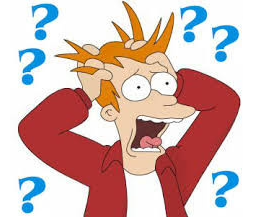Blog Posts
Your Children and Toys …What to look for as a Parent
Playing is important to children. It is the way they practice growing up. Toys are the tools children use in play. Toys can be purchased, or they may be as simple as kitchen pan lids or paper sack puppets. Anything children can play with safely can be a toy. In fact, you may have watched infants open presents and noticed that they spent more time playing with the ribbon and wrapping than with the toy inside.Try to remember two or three of your favorite toys. Were they ones you created yourself or ones someone made for you? Did you have a favorite ball…a animal friend?
Toys can be divided into several groups, depending on the part of the child it helps to develop.
* Toys for physical or muscle development such as wagons, bouncy horse, bikes, boxes, puzzles, blocks, brooms, and shovels.
* Toys for sensory (touch, sight, sound, taste, smell) development such as water toys, musical instruments, bubbles, play dough, and sand toys.
* Toys for make-believe and social development such as dolls, dress-up clothes, cars, trucks, games, and books.
* Toys for creative and intellectual development such as clay, crayons, paints, books, paper, and scissors.
Sometimes toys fit into more than one category. A wagon can help develop children’s muscles and also be used as the “ambulance” in a hospital game. Children need a balance of toys from each of these groups to ensure their whole development.
WHY ARE EDUCATIONAL TOYS IMPORTANT?
Children need to have direct experience with the world in order to make sense of and learn about it. Have you ever thought about all the things children learn after they are born? They learn how to talk, sit up, walk, and run. They learn what things are and how they work. They learn about people and the world. They learn all of these things by playing with toys.
Toys are important for other reasons, too. Children exercise their muscles with toys. Next time you see children rocking horses or riding bikes, notice the muscles they are using.
Think of the coordination and balance they practice when they climb to the top of the jungle gym or the muscle control they develop when they put one more block on the tower without it falling down. All these necessary skills are developed easily through toys.
Toys also invite children to create and use their imaginations. Give an empty cardboard box to a child and watch all the things it becomes – a train, house, or cage at the zoo. Children start many play times with “Let’s pretend…” and toys encourage this.
Children gain self-confidence as they play with toys. As children master their toys – as they finish a puzzle, ride a trike, or blow a bubble – they develop a sense of power. They say, “I can do this. Look at me.” As a caregiver, you often may find children want to show you what they can do with their toys. It is important to recognize their accomplishments. When an adult pays attention to children’s play, they feel worthwhile and gain self-confidence. Their self-concepts grow stronger.
Along with building self-esteem, toys can be the basis for friendships. Toys like teeter-totters only work when children cooperate. Projects like building sand castles go faster with friends.
Children often talk more easily to one another over toys. Playing with toys in a group helps children discover how others think and feel and what brings approval or disapproval. They learn what happens when they share the truck they are playing with or when they refuse to share and the truck is taken from them.
With toys, children can use energy and discover emotions. Children have lots of energy. It may not be okay for them to use their energy to jump on the bed, but it is almost always okay for them to use it to ride a trike or bike. Toys also are useful as a way to deal with working through emotional conflict or anger. Splashing water or pounding play dough can help children release tension.

